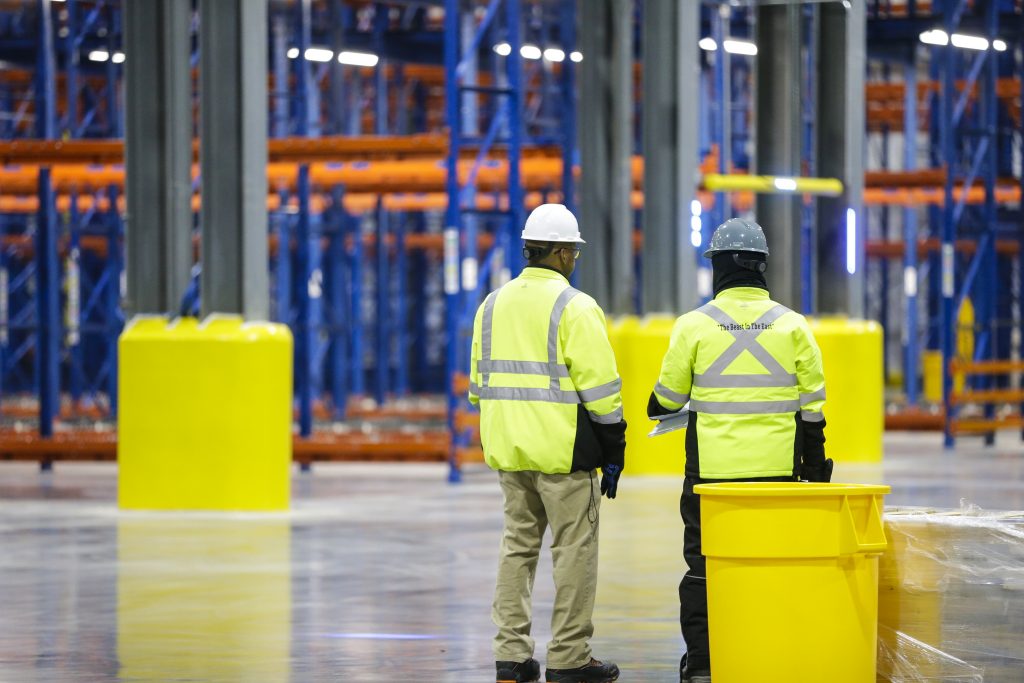The cold storage industry plays a pivotal role in the global supply chain, particularly in sectors like food and pharmaceuticals. In India, the use and importance of cold storage warehousing are growing swiftly, driven mainly by increasing demands for the freshness, availability, and cost-control of food items. Despite the presence of approximately 6,300 cold storage facilities, there is an urgent need to expand this infrastructure affordably and sustainably, to meet evolving needs and minimize wastage.
However, while these facilities are vital, they also pose unique safety challenges that must be thoroughly addressed to ensure the well-being of workers and the integrity of stored goods.
Identifying the Risks
Cold storage facilities inherently carry risks associated with standard warehouses and some specific to their nature:
- Insulated Metal Panels: Often used in ceilings and walls to maintain temperature, these panels should be non-flammable or approved as per standard guidelines, to prevent the rapid spread of fire.
- Ammonia Use: Frequently chosen as a coolant in these facilities, ammonia is a combustible substance whose use must adhere to strict safety guidelines for cooling systems.
- Moisture Levels: Maintaining appropriate humidity levels is crucial to prevent goods from deteriorating and electronic devices from malfunctioning.
- Fire Risks: Despite the cold environment, these facilities carry a significant fire risk due to factors like chemicals, air composition, and storage of flammable goods and packaging.
Implementing Safety Measures
Implementing appropriate safety measures is vital to mitigate these risks and ensure the safety of both the workers and the goods:
- Emergency Exits: Cold storage rooms should have at least one door that opens from the inside for emergency escape.
- Illumination: Lighting must be supplied through a constantly burning bulb or a light with an illuminated switch located inside the cold room.
- Floor Safety: Non-slip flooring mats should be used in wet areas to prevent slips and falls, one of the most common warehouse accidents.
- Fire Safety Equipment: Safety equipment, such as a firefighter’s axe, should be stored in the room if anti-freeze doors are not installed.
- Chemical Safety: Ensure that chemicals in cold storage are stocked properly and with compatible materials to prevent chemical reactions and fires.
- Personal Protection: Workers must be equipped with proper gear. It includes warm, layered clothing, caps with ear flaps, and insulated, moisture-proof gloves and boots to protect against cold stress.
Real-world Perspectives from India
An example that illustrates the importance of these safety measures is the incident that took place in 2013 in Kanpur, India. In a cold storage facility, a leakage of ammonia gas resulted in the tragic death of four workers and severe injuries to a few others. The primary reason for this accident was reported as non-compliance with safety regulations concerning the handling and use of ammonia. This incident underscores the need for strict adherence to safety guidelines, especially concerning hazardous substances.
In another instance in 2016 in Maharashtra, a fire broke out in a cold storage facility due to faulty electrical connections. The fire spread rapidly, fueled by the flammable insulation material of the panels. Although no casualties were reported, the incident resulted in significant financial loss and disrupted operations for several weeks. This incident emphasizes the importance of regular electrical inspections and the use of non-flammable materials in constructing cold storage facilities.
These incidents serve as stark reminders of the potential risks in cold storage facilities and underline the crucial need for diligent adherence to safety measures.
With a focus on safety, India’s cold storage industry can meet the increasing demands while ensuring the safety and well-being of its workers. By integrating best practices and ensuring strict adherence to safety guidelines, the cold storage industry in India can evolve sustainably and safely, effectively contributing to the nation’s economy.
References:
- “Warehousing in India: Challenges and the Way Ahead.” (2021). Infrastructure Today.
- “Cold Storage Industry in India: An Overview” (2022). The Economic Times.
- “Safety and Health Topics | Ammonia Refrigeration – Hazards and Solutions | Occupational Safety and Health Administration.” OSHA.
- “Fire in Cold Storage – Its Causes and Prevention” (2022). Fire Safety Search.
- “Four Killed in Ammonia Leak at Cold Storage in Kanpur.” (2013). The Times of India.
- “Fire Breaks Out in Cold Storage in Maharashtra.” (2016). The Hindu.
- “Guidelines for safety in cold storage operation” (2022). Industrial Safety Review.


Leave a Reply